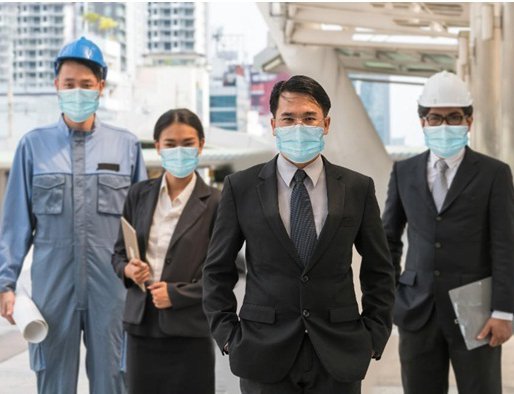
Many nations, along with big corporations, industries, organizations as well as all kinds of manufacturing facilities and worksites around the globe are facing with unprecedented nature of obstacles and challenges due to the Covid-19 pandemic. People are desperate to get back to Pre-COVID life, or at least to be able to attend to their bare minimum day-to-day businesses. Amidst all the uncertainties and restlessness brought about by the disease, business organizations and offices are trying to cope with the situation and open up slowly. However, the threat of novel coronavirus and the risk of its infection among the employees remain paramount. Employees are the most important resources in any organization, therefore adequate health and safety measures need to be in place to protect them from exposure and transmission of this deadly virus at workplaces.
To begin with, businesses need to form a Joint Occupational Health& Safety (OHS) committee/team, if it is not already an integrated part of the organizational management system. Train the team members on the basic principles for the formulation and implementation of OHS preventive and control measures to fight Covid-19. Direct the team to develop a work plan including the steps to be taken to organize a safe and healthy return to work program. Moreover, you can also integrate this work plan into the framework of your Business Continuity Plan (BCP) which is basically a comprehensive written plan to maintain or resume the business of your organization in the event of a disruption, such as this one.
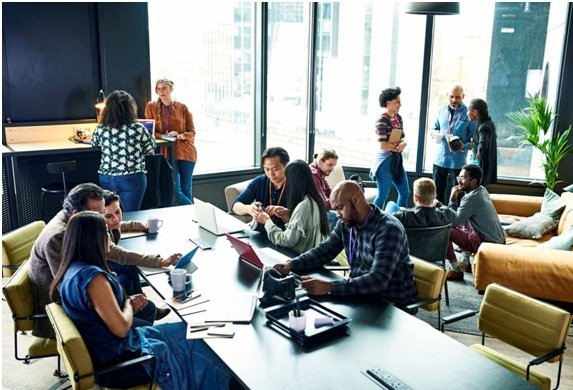
As part of the work plan, you should conduct an organization-wide void-19 risk assessment to determine the preventive and control measures necessary for a safe return to work. The purpose of this risk assessment is to first identify the work areas and processes which pose the risks of virus spread, then implement proper risk mitigation measures to control those risks. In addition, risk assessment helps you identify critical personnel (who will need to be present at the office and site) and focal points (to monitor Covid-19 prevention and control measures) which are of vital importance while planning for your BCP as well. The information gathered from the risk assessment would also help organizations to plan for work-from-home, job rotation of employees, emergency preparedness and continuing business activities during extended/unforeseen disruption. Following the risk assessment, the OHS joint committee or team should implement a hierarchy-of-controls strategy that utilizes engineering as well as administrative (or organizational) controls to prevent the spread and transmission of Covid-19 in your facility. Some of the significant aspects of these control measures are discussed below.
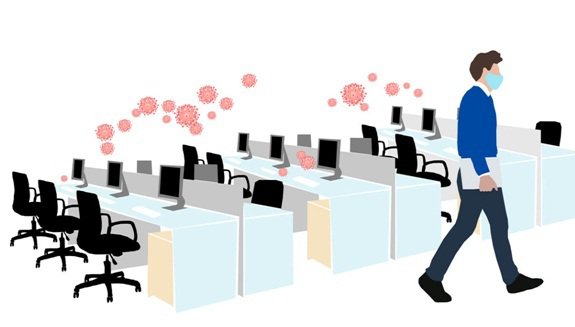
Before as well as after the reopening of the workplace, employees/workers need to be provided with all the necessary information about the workplace processes and measures taken against Covid-19. Proper signage should be placed in visible places around the facility explaining requested preventive and control measures to be followed by the employees. Maximum occupancy of different work areas needs to be determined to maintain physical distancing of at least 2 meters at all times and in all work-related situations. Management needs to increase the frequency of cleaning and disinfection, especially in common areas. However, if your workplace, school, or business has been unoccupied for 7 days or more, it will only need your normal routine cleaning to reopen the area at first. This is because the virus that causes COVID-19 has not been shown to survive on surfaces longer than this time.
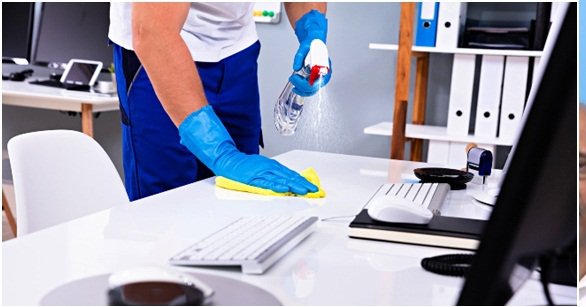
Make sure that the workplace is ventilated daily, preferably with natural ventilation by opening the windows. In the case of mechanical ventilation (HVAC system), you should maintain enough recirculation with outdoor air. Management should strictly avoid a high concentration of staff during collective transportation; determine the number of riders, maintain distancing and enforce the use of masks to cover the mouth and nose.
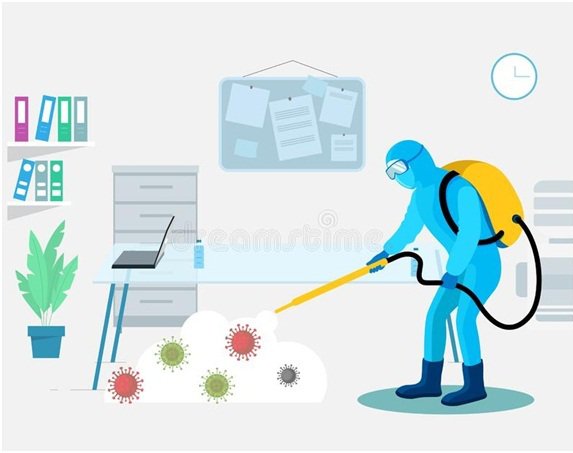
During the Covid-19 pandemic, employers should promote and encourage remote work and timework, as far as possible. To avoid a large group of employees, you should adopt work rotation measures including alternating working days. Employees should stay 2 meters away when they must go into a shared space. However, If/when close contact is unavoidable; employees must wear a mask or cloth face coverings in corridors, closed spaces, vehicles, meetings, etc. Furthermore, you should try to keep close contact for the minimum duration; less than 15 minutes. In case of emergency signs, such as trouble breathing, pressure in the chest, etc. you should immediately inform your supervisors.
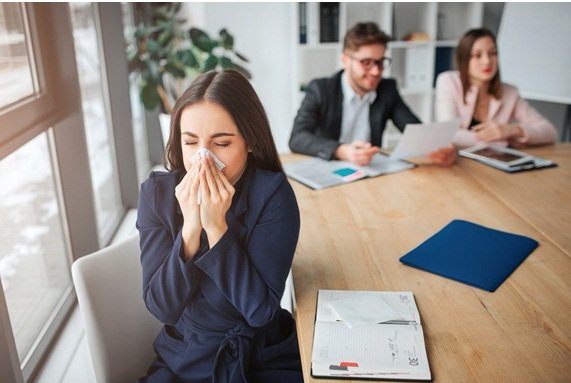
The promotion of personal hygiene is highly important in the prevention and control of Covid-19 infection within an organization or otherwise as well. Employers must provide workers with the conditions and means necessary for frequent hand washing and hand sanitizing. It is healthy and safe to prioritize the use of paper towels instead of fabric towels or electric air-jet drying devices in restrooms. Workers must avoid physical contact when greeting each other. They should avoid touching eyes, nose and mouth without having previously performed hand hygiene and disinfection. Sharing food, drinks, kitchen and personal toilet items can be avoided as temporarily. Don’t forget to cover your mouth and nose when coughing or sneezing; using the inner face of the forearm or elbow is recommended.
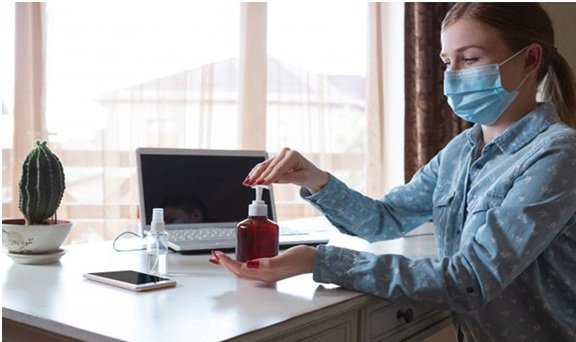
Based on the risk assessment employers should provide appropriate Personal Protective Equipment (PPE) to mitigate health & safety risks faced by the workers. Appropriate safety measures, along with proper PPE, need to be implemented for the use and storage of chemicals, particularly those used for disinfecting the work environment. Such practices must always be accompanied by adequate instructions, procedures, training and supervision.

In addition to environmental disinfection including personal hygiene and various administrative control measures, OHS joint team should also conduct routine health monitoring of employees including temperature checks; twice a day. Management must define protocols to stay at home for workers with symptoms or suspicion of Covid-19. Maintain a travel log for all the staff traveling to/from the high-risk regions or countries. Moreover, one should stay alert to identify workers who have had close contact with people infected with Covid-19 and communicate the same with appropriate authorities voluntarily.

People, in general, are already anxious and stressed due to extended lockdowns and fear of infection. Therefore, management should put extra effort into promoting a safe and healthy working environment that is free from negativity, such as violence, discrimination and harassment. Make psychological counseling services available to workers in case of need. Besides, the OHS team must ensure that the organization’s safety-critical systems and personnel (such as maintenance, security, first aid, emergency services, transportation, etc.) are ready and fully functional. Develop an organizational emergency response plan especially adapted to Covid-19.
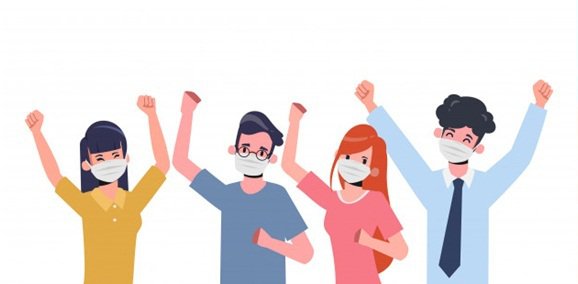
It is highly important to make your workforce feel safe and secured by regularly communicating with them regarding the changes in safety measures made at the workplace due to unfolding the Covid-19 pandemic. As the situation evolves, management, in consultation with the OHS joint team, should periodically monitor the organization’s Covid-19 prevention and control measures to determine whether they have been adequate to avoid or minimize risk, and to identify and timely implement corrective actions for continuous improvement. Furthermore, it is highly encouraged to maintain records related to work-related injuries, illnesses as well as worker exposures, monitoring of the work environment and workers’ health.
Although the crisis of Covid-19 is still evolving with numerous confusions and uncertainties around it, we need to realize that we are far from business-as-usual which will be affected for a significant period of time. Therefore, to address the challenges of Covid-19 in your organizations, establishing a resilient health & safety culture now becomes more important than ever.

Amit K. Shrestha
Shrestha is a freelance Consultant, MS in Risk Control & Safety Management; The author is passionate about the issues involving environment, occupational health, safety and sustainability for the planet, people and profit. Contact Email: OHSNepal@gmail.co
- Preventing Rapid Climate Change: A Hugely Complicated Taskfor Humanity To Tackle
- Oct 29, 2021
- Changing Perception Changes Everything: A Paradigm Shift In Consciousness
- Aug 02, 2021
- Business Continuity Planning And Disaster Recovery: NRB Guidelines For Commercial Banks of Nepal
- Jun 23, 2021
- Fighting Covid-19: Emotional And Mental Wellbeing Of Essential And Frontline Workers
- May 23, 2021
- Fearsome-4 of Construction Industries: Focus on Fatal-Four Hazards
- Jan 27, 2021












